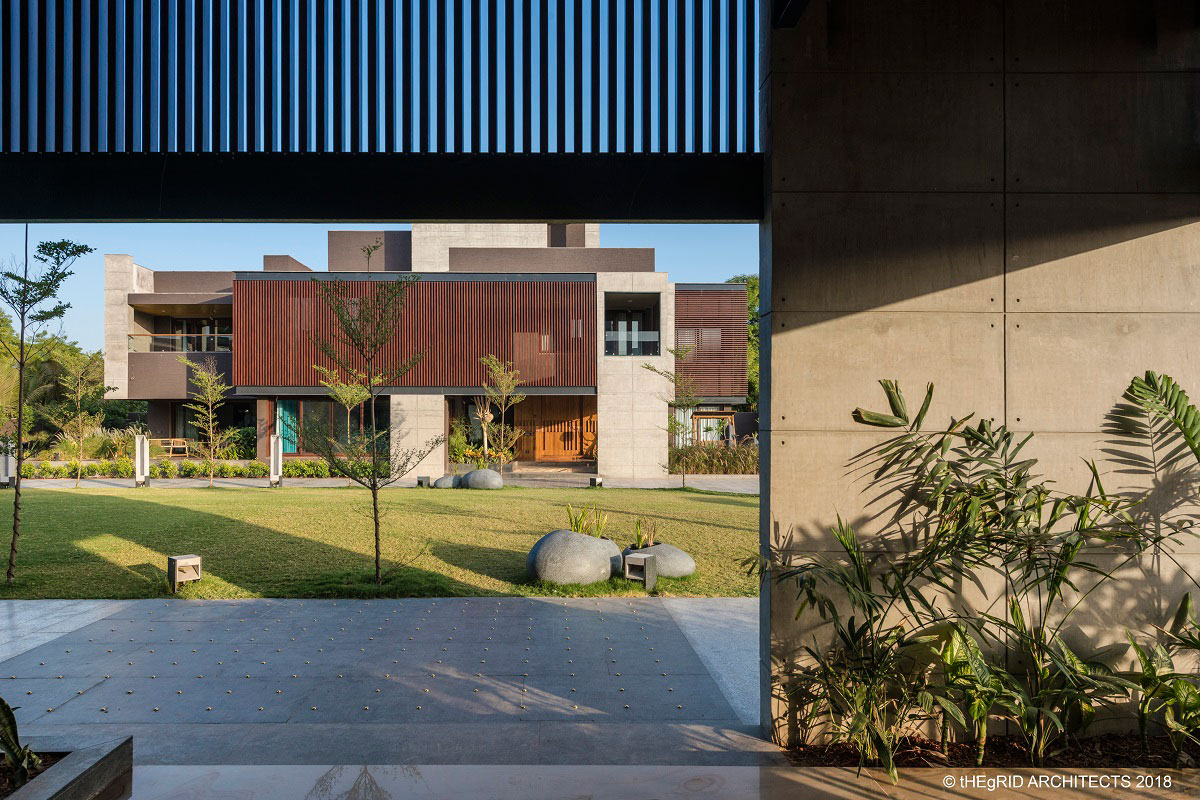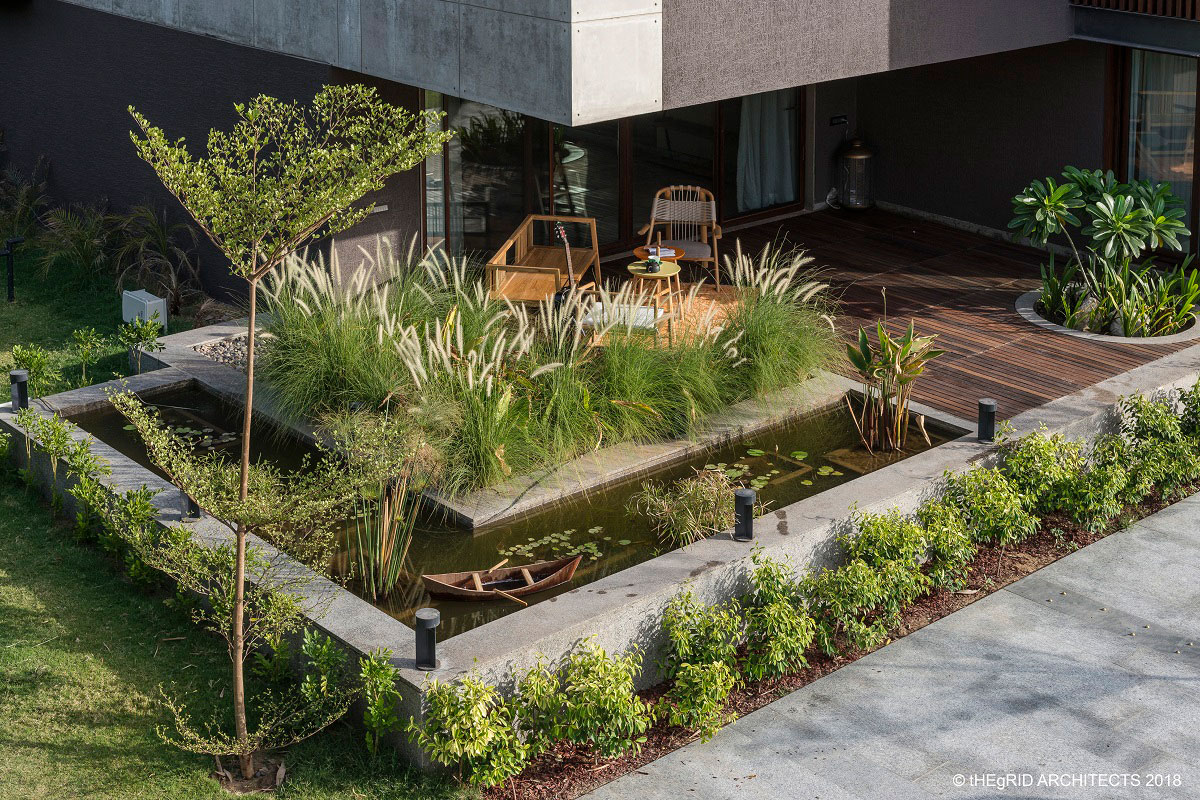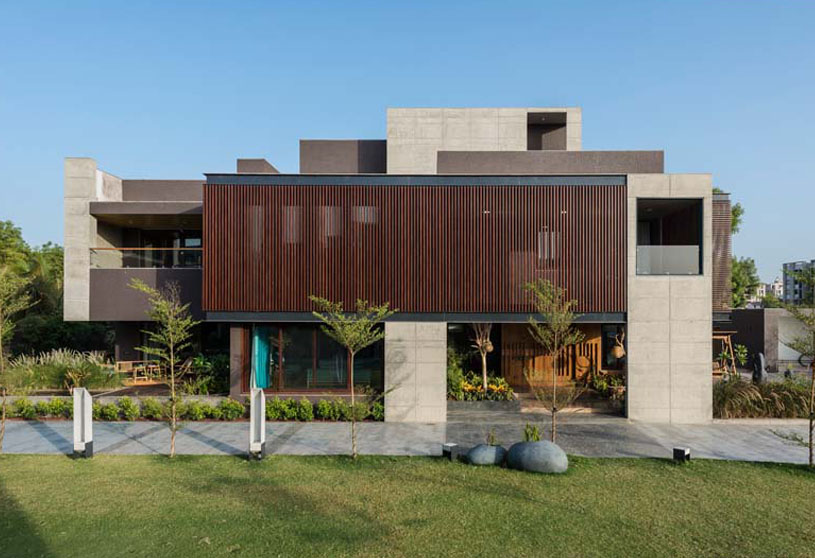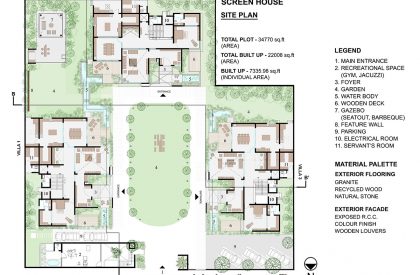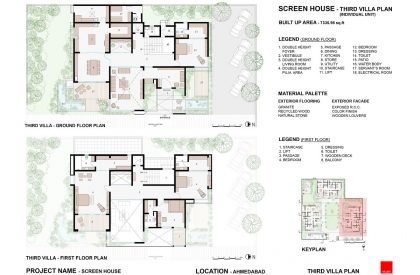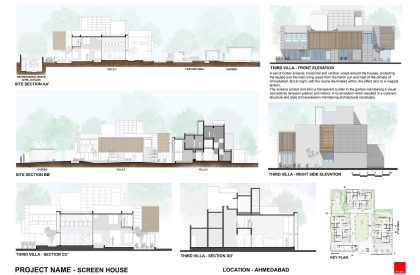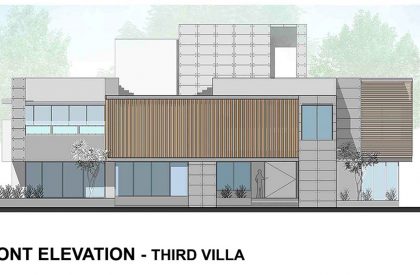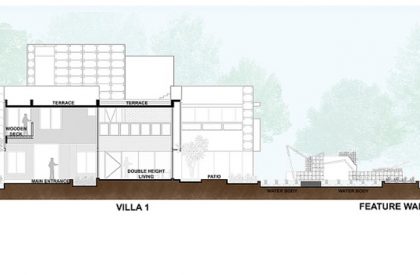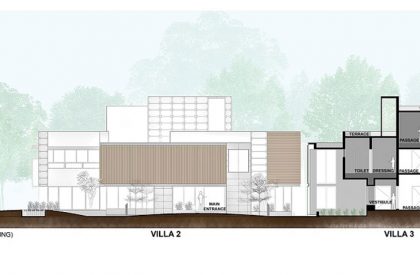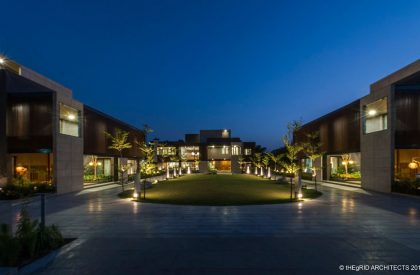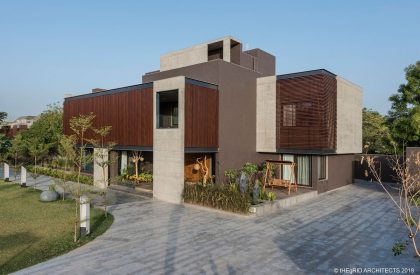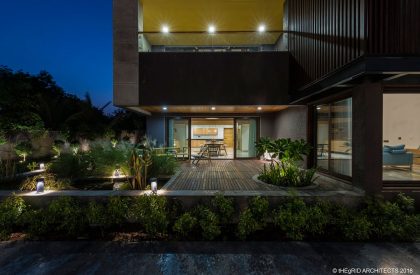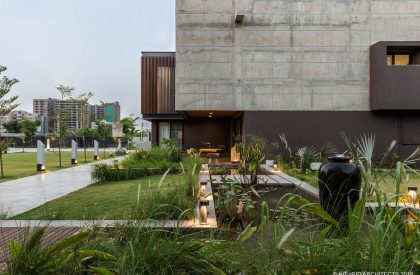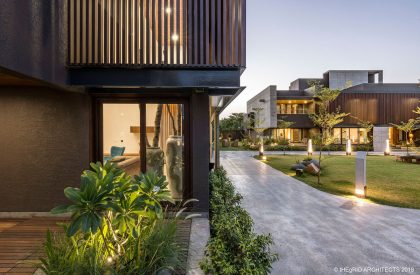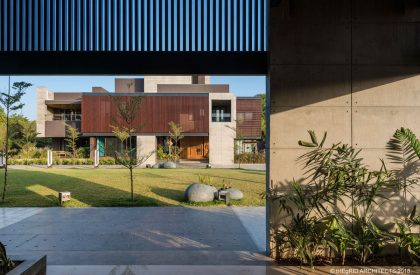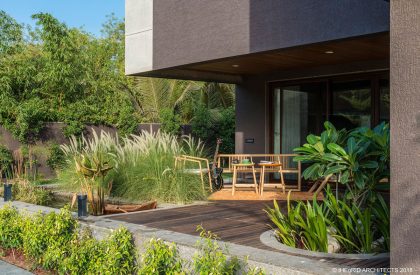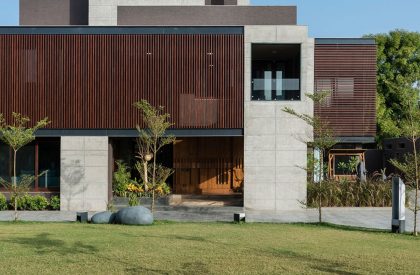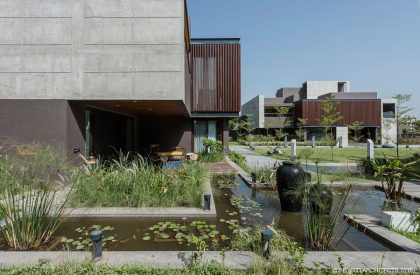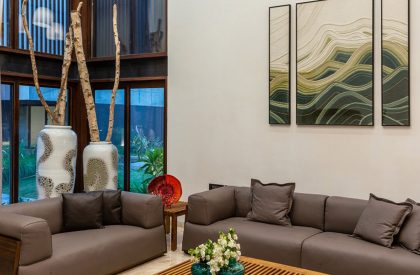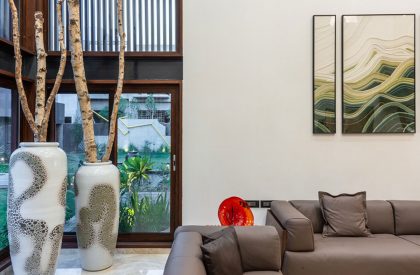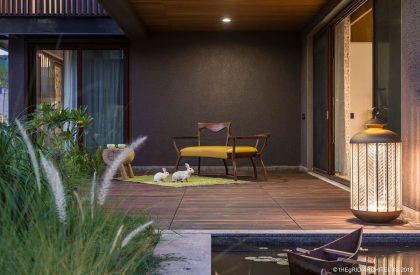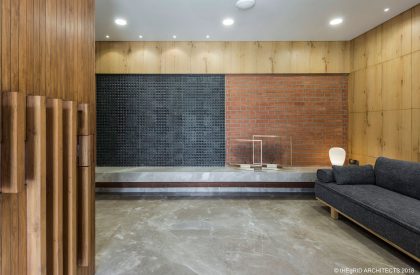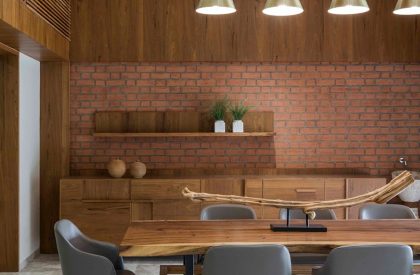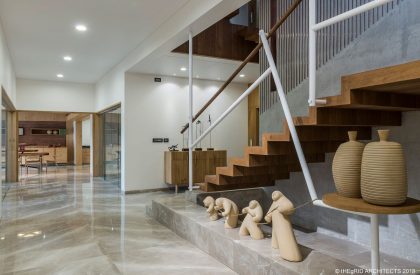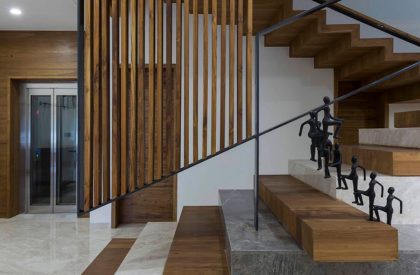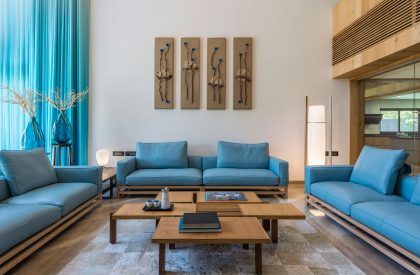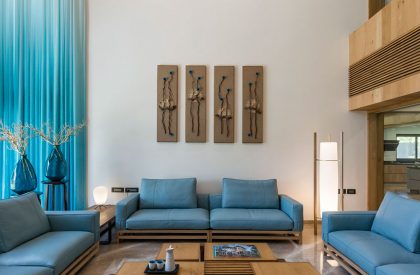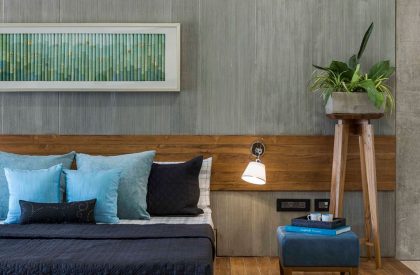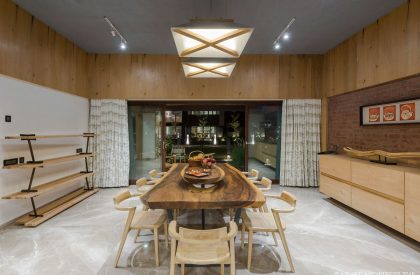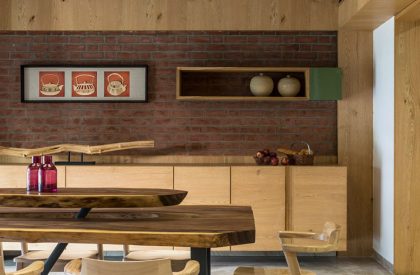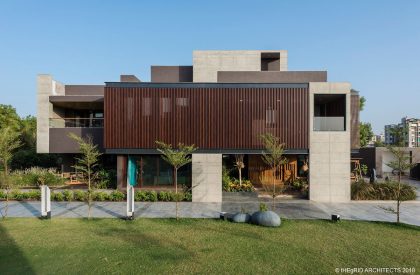Excerpt: The Screen House, designed by tHE gRID Architects, is a beautifully integrated development comprising three discrete spaces, each one serving the needs of sub-sets of the unit yet linked in spirit and design. Water-bodies, semi-open spaces and vegetation articulate the connectivity of the three homes. The architecture explores the interplay of alliances between plant life, water, sky, built-form and humans. The building comprises of sections interlocked with the functionality of the spaces to create a balanced whole.
Project Description
[Text as submitted by Architect] Screen House is a beautifully integrated development that houses a large family and various age groups. It comprises three discrete spaces, each one serving the needs of sub-sets of the unit yet linked in spirit and design.
The site is located facing north, with all other three sides abutting adjacent properties. Within this, the three main constituents — facing west, north and east — are arranged in a C, encircling a central green courtyard that actually functions as a common space; an open air living room. This is where the family congregates, to share stories, watch movies, read, and unwind.
The connectivity of the three homes is articulated by water-bodies, semi-open spaces and vegetation; while sightlines have been maintained by selecting plants and trees (especially those of the central court) which are not too dense or will not become too tall.
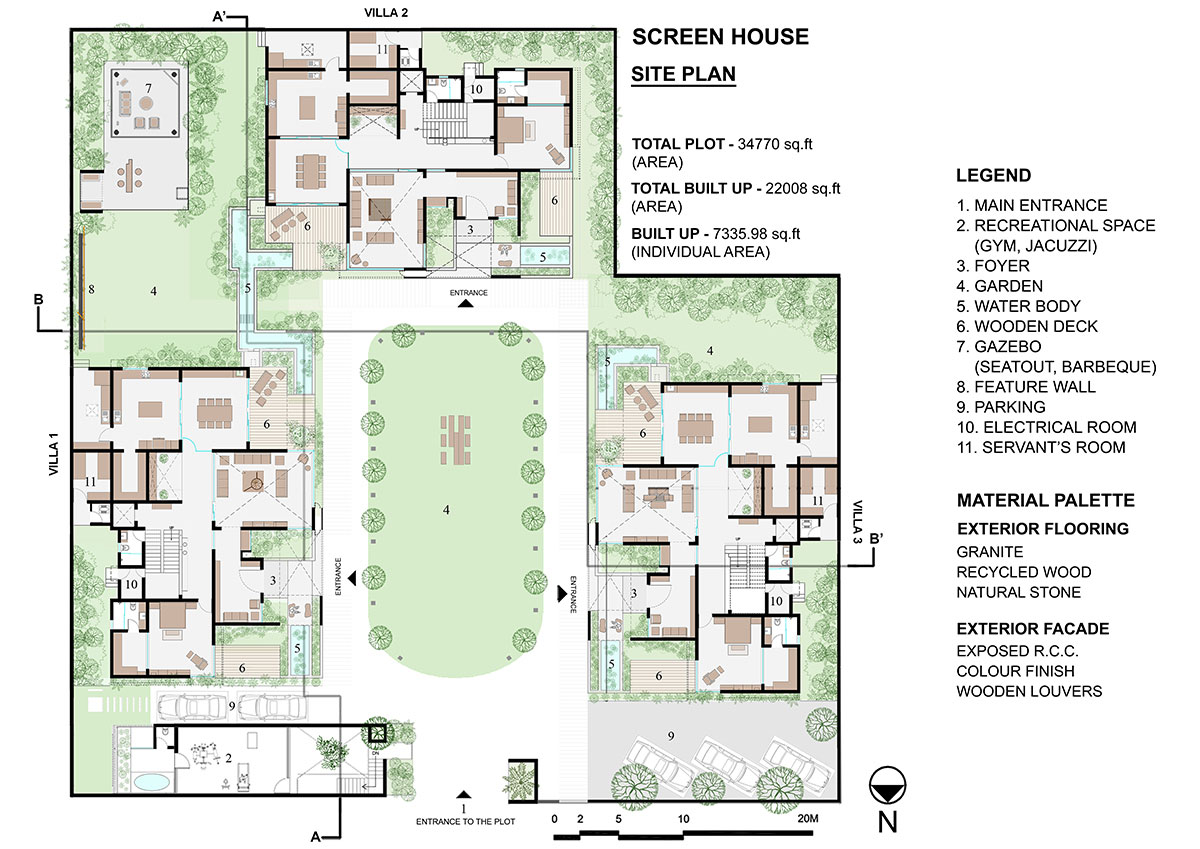
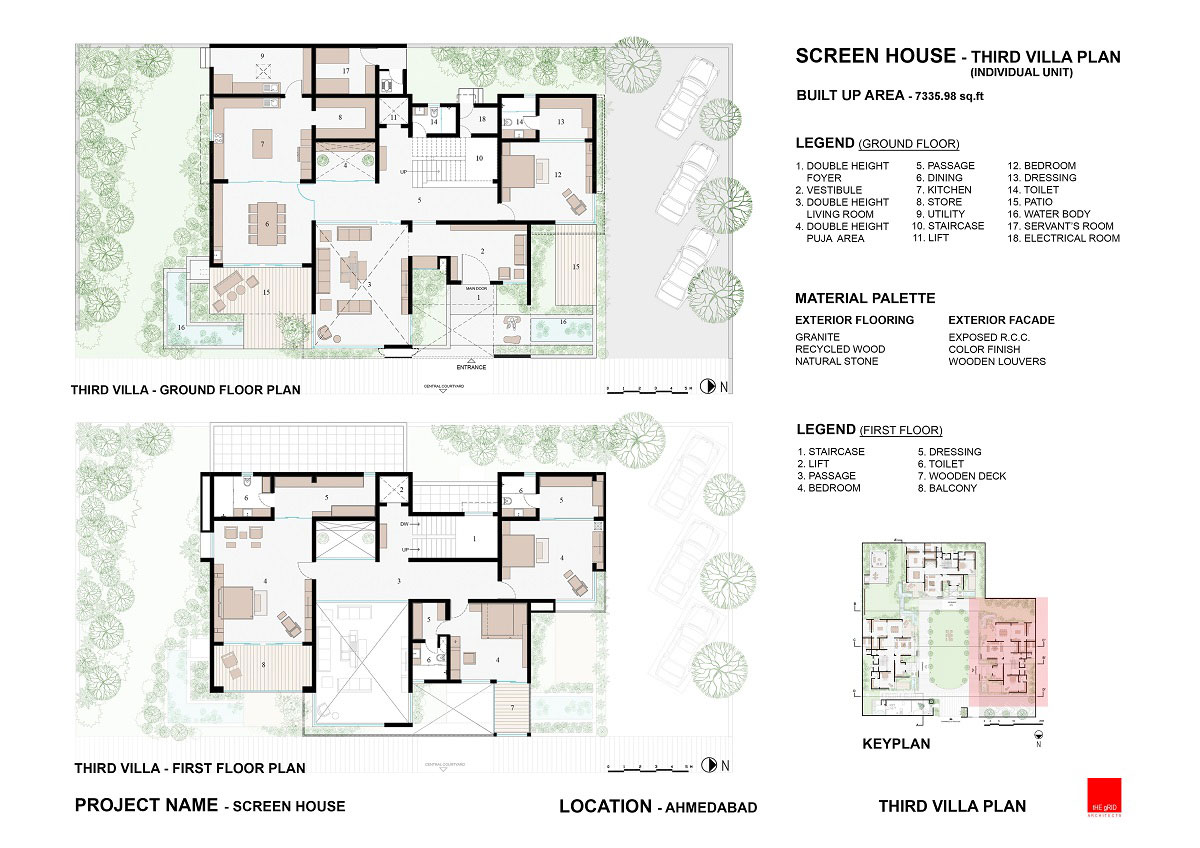
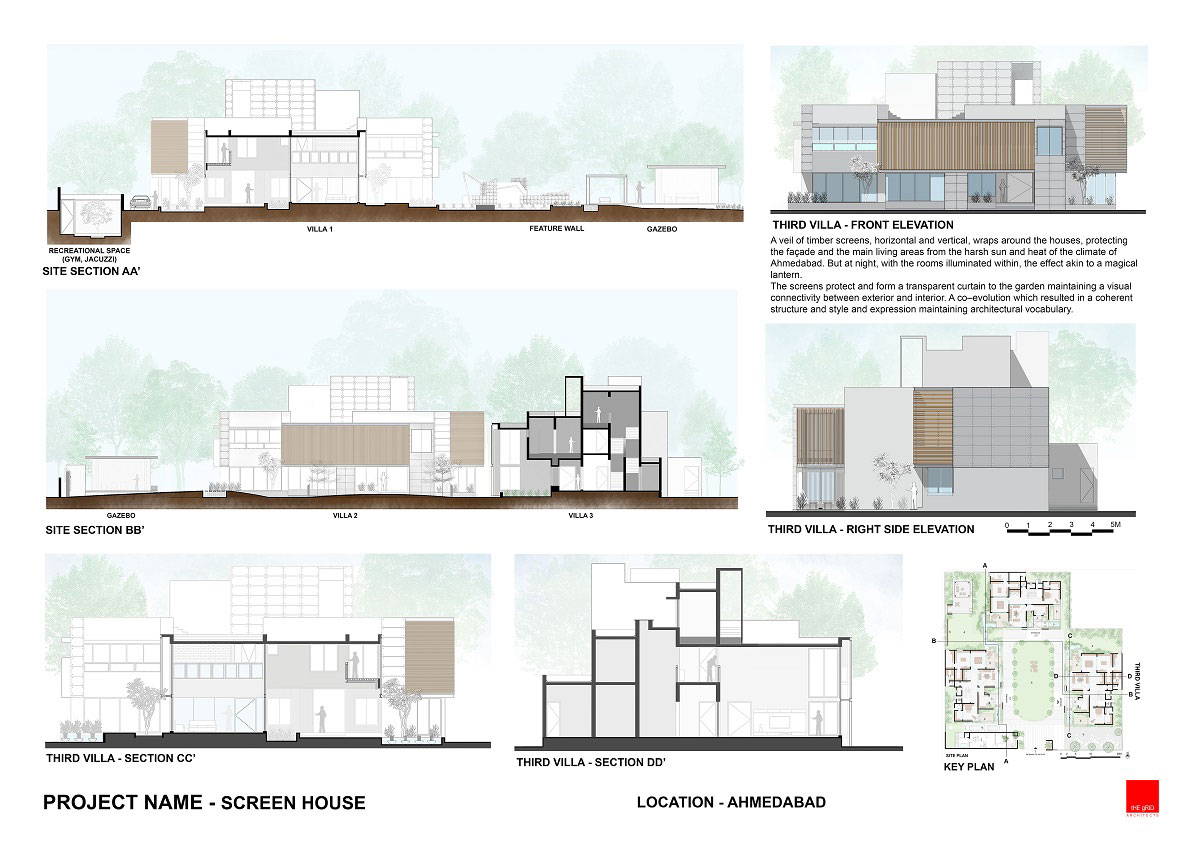
The individual homes were planned keeping in mind the size of the plot, sun path, family requirements and climate. The architecture explores the interplay of alliances between plant life, water, sky, built-form and humans. The building comprises of sections interlocked with the functionality of the spaces to create a balanced whole. Elevationally, all three structures see a prominent use of brise soleil in the form of screens — hence the name. The landscape was planned to seem natural, with several waterbodies at intervals. For the architect, water plays a symbolic role. “It changes our relationship to space,” he says. “It creates a reflection and adds an element of sensuality. Water symbolizes life.”
The exposed concrete on the elevation is tautly balanced with the earthen color and screens. A basic, close-to-nature basic palette was selected — stone, wood and concrete — which helped create a stable thermal mass. During the day, the house takes on a very “private” appearance. A veil of timber screens, horizontal and vertical, wraps around the houses, protecting the facade and the main living areas from the harsh sun and heat of the climate of Ahmedabad. But at night, with the rooms illuminated within, the effect akin to a magical lantern.
Everything was planned in rhythm: architecture, landscape and interiors. Each house has a water-body at the entrance porch and a personal sit out in continuum. The intent was to keep the homes warm and welcoming, a house that always remains open. A living space that merges with the garden, so that it almost becomes a part of it. The constant presence of water in every house infuses serenity. The screens protect and form a transparent curtain to the garden maintaining a visual connectivity between exterior and interior. A co–evolution which resulted in a coherent structure and style and expression maintaining architectural vocabulary.
The planning has been starkly defined in clear linear movements interspaced with the glimpses of the open courtyard — a peaceful, complete space with rippling water-bodies and carefully chosen mature trees. The principal living spaces — vestibule, living room, dining area and kitchen — are rhythmically oriented depending upon the circulation needs.
The interior are artistically composed and remarkably spacious. The orientation is to catch the breeze through balconies, verandas and wide overhanging/cantilevered eaves that would also provide requisite shade.
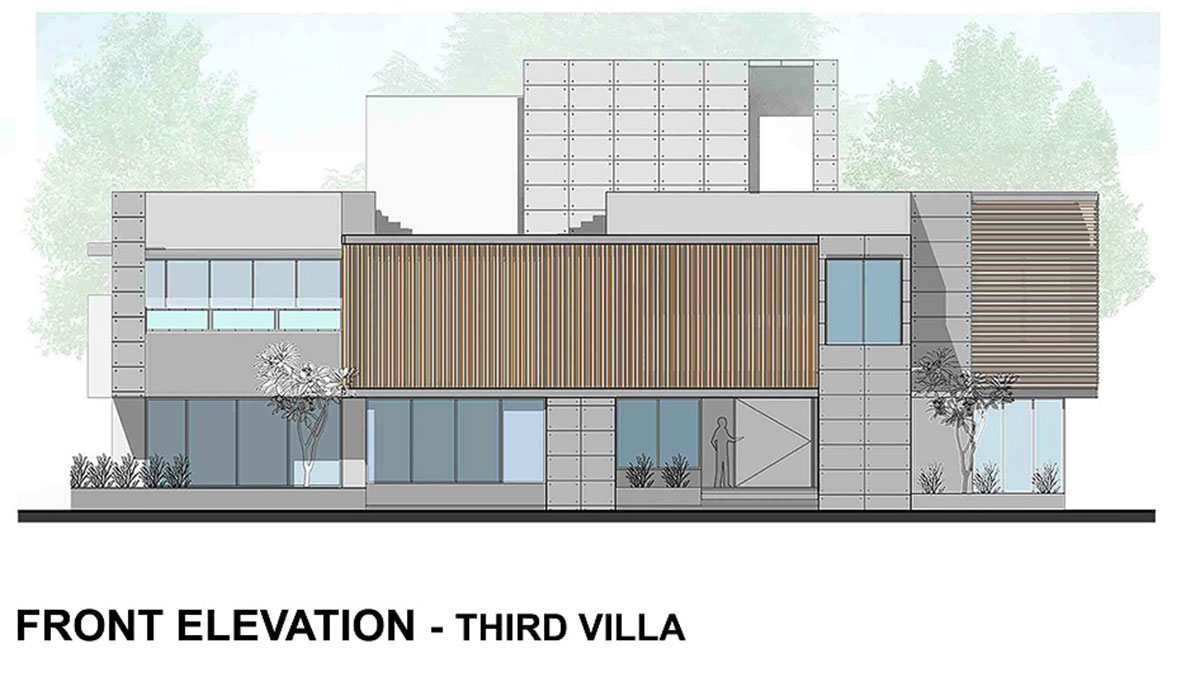
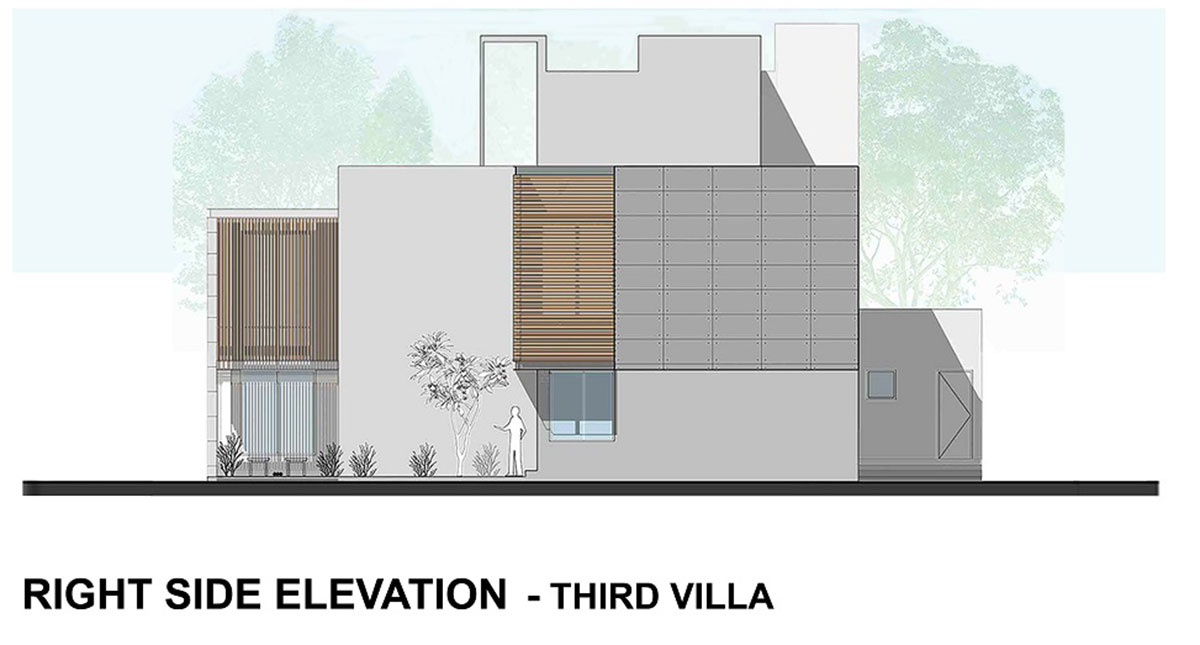
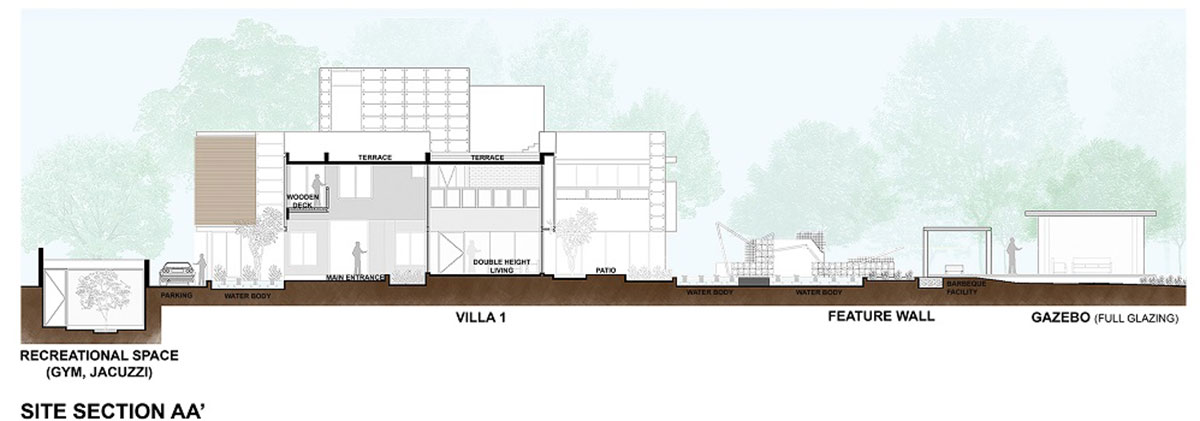
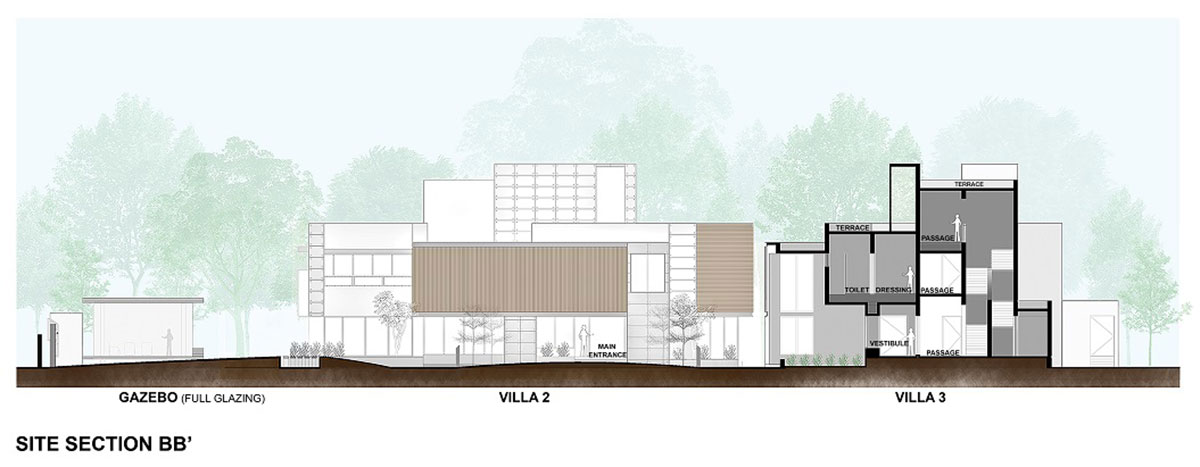
The interior program clearly demarcates and segregates semi-private and private areas. Even beyond the main entry, a vestibule caters to casual visitors. After this, the program unfolds via a passage leading, on one side, to the prayer room, kitchen and dining and patio, and, on the other, the guest room, elevator and staircase. The staircases of each homes are defined differently each a sculptural element on its own. The prayer room is a place for spiritual repose highlighted by daylight that penetrates from a skylight above. The ethereal prayer room breaks the stereotype by the placing the divine in the midst of lush vegetation, bathed by natural light that pours through the skylight by day and modern, jaali-effect lamps by evening. Vertical glazed louvers on the south wall promote ventilation and restrict sunlight, creating a dramatic interplay of shadow and light.
The double-height of the indoor living room in conjunction with the green vista that unfurls through floor-to-ceiling windows furthers the ‘living in a garden’ endeavor. The dining rooms are also extended to a timber patio with a lily pond brimming with koi fish. Essentially, the ground floor living areas are conceptualized as an open space overlooking the landscape filled with biodiversity and water. In contrast, the upper level is private and houses three bedrooms, each one overlooking the central landscape, and featuring a generous ensuite and dressing–closet.
The development also shares several facilities such as a well-equipped gym and jacuzzi in the basement of a separate structure, an outdoor barbeque facility attached to a covered, fully-glazed gazebo, and a fire pit to cater to extending to the garden and water-bodies.
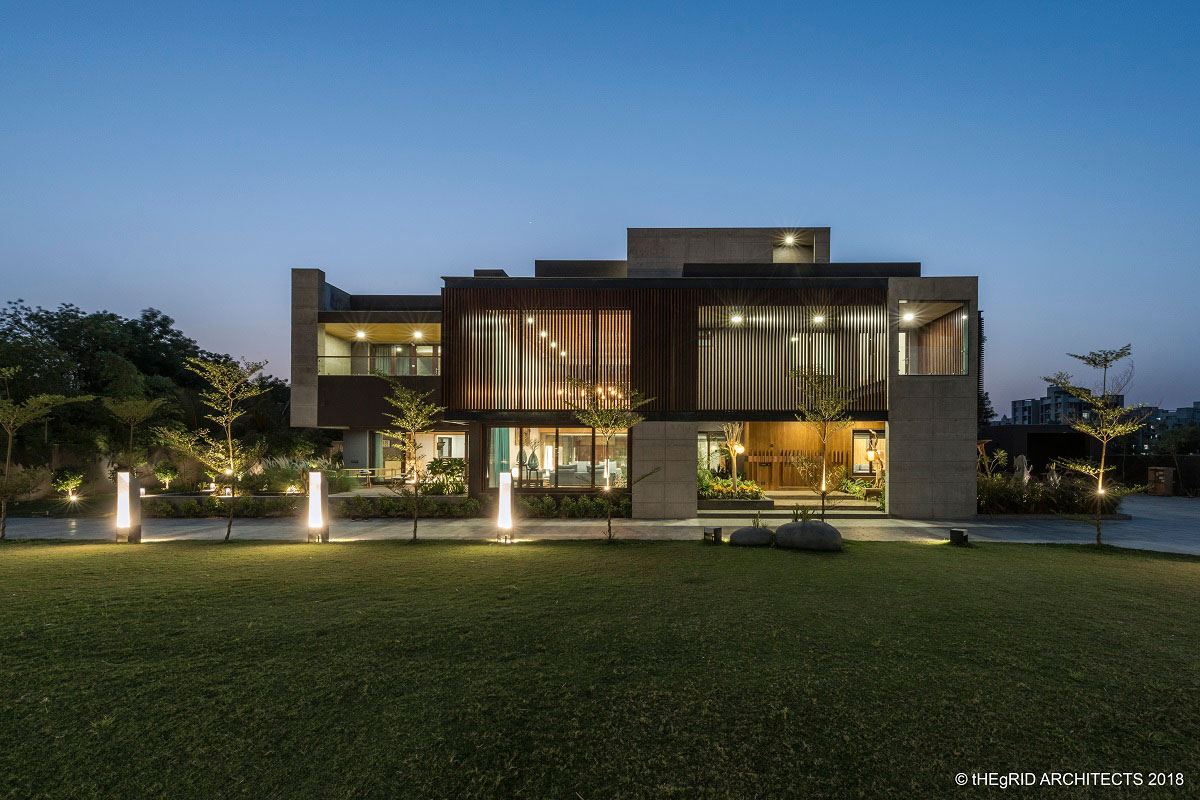
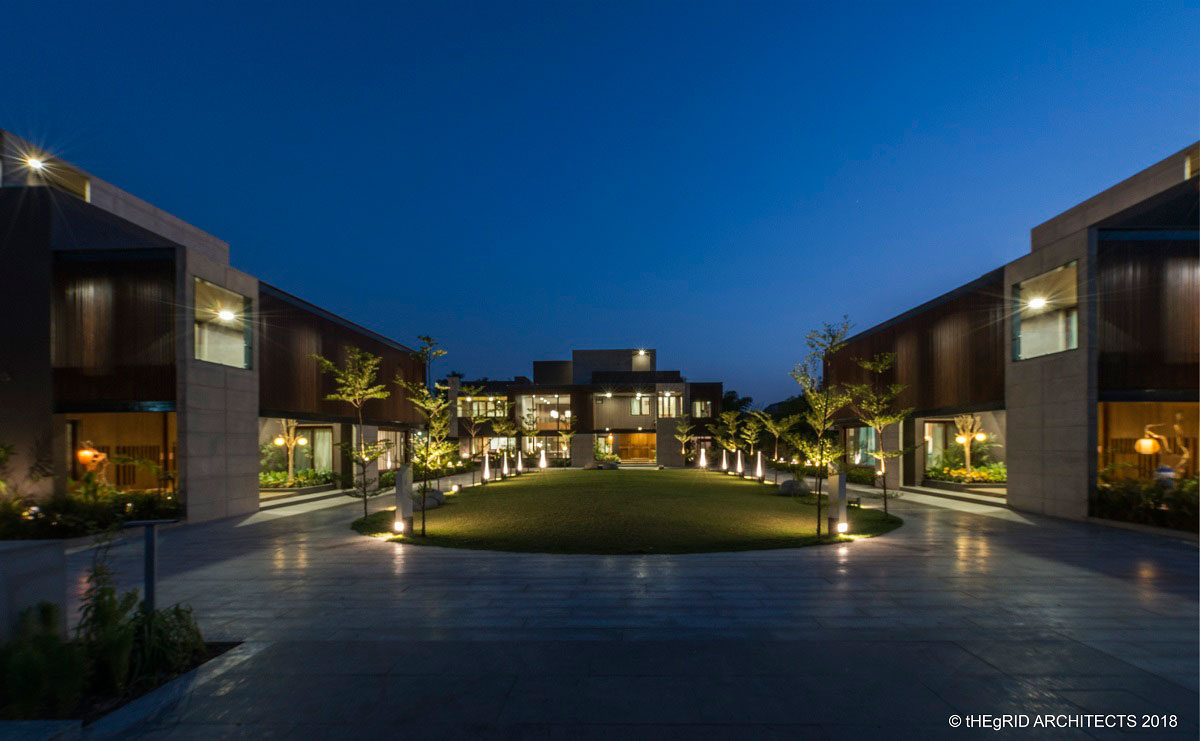

The selection of materials, meticulous attention to detail, modulation and movement of space planning and inculcating landscaping as part of the whole, are the hallmarks of this development. There is abundance of natural light and nature. The Screen House is an urban residence that embraces the community living culture. A quite retreat amidst the bustle of the city.
The building has a strong connection to the earth and to nature, encouraging a type of community living for the whole family. This is the message to the next generation.
GREEN PRACTICE:
- a) Rainwater harvesting
- b) Solar panels
- c) Inverter based AC
- d) Oxygen generating local species – indoor and outdoor plants
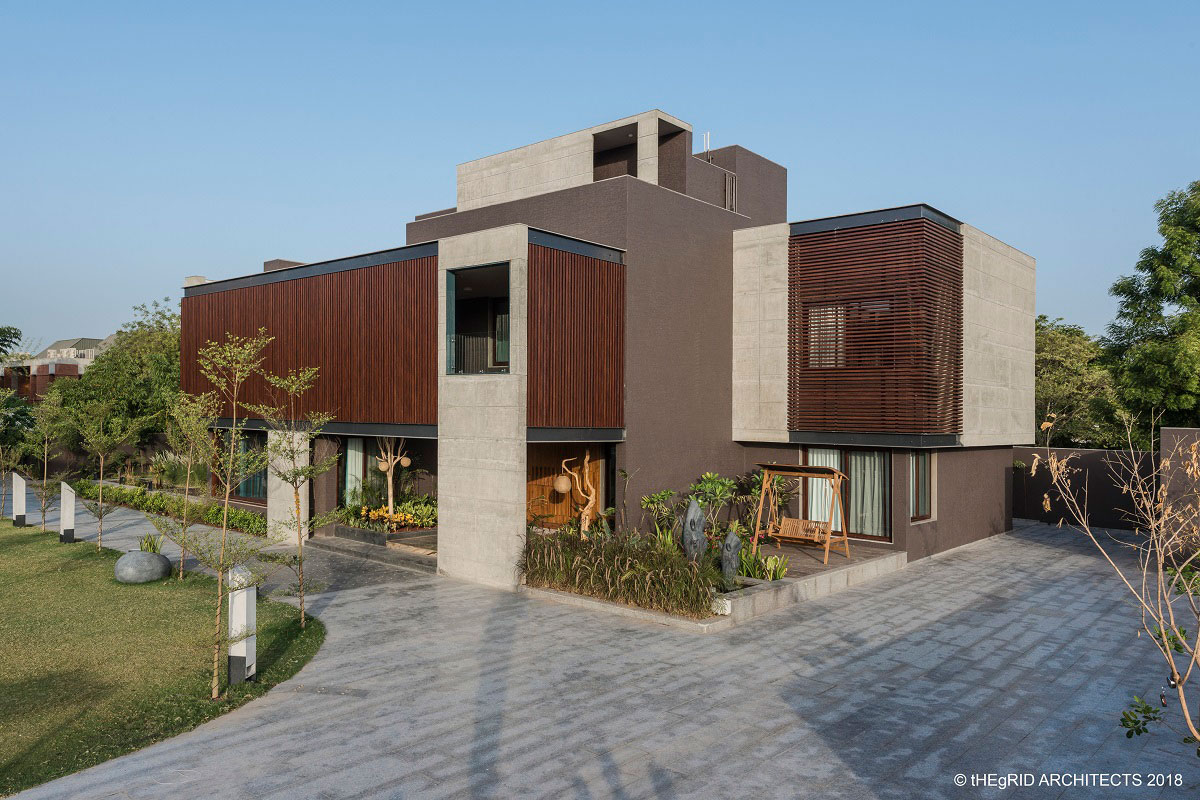
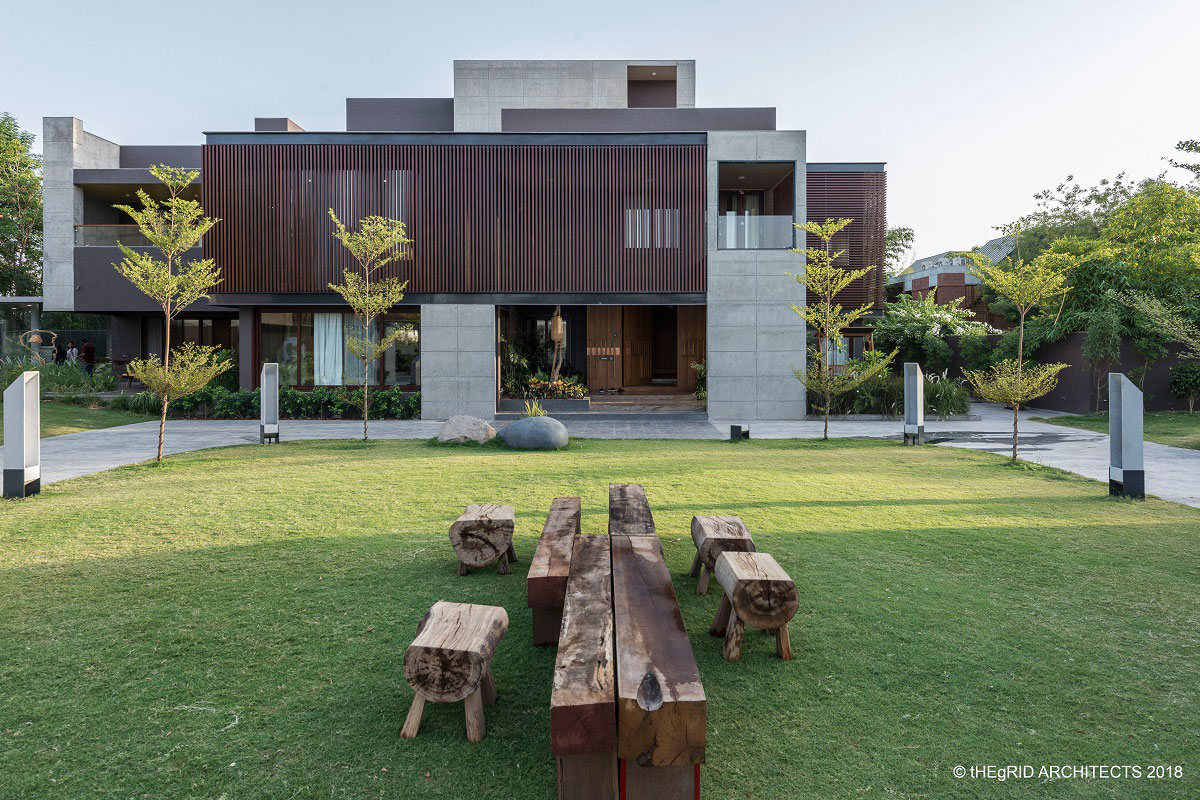
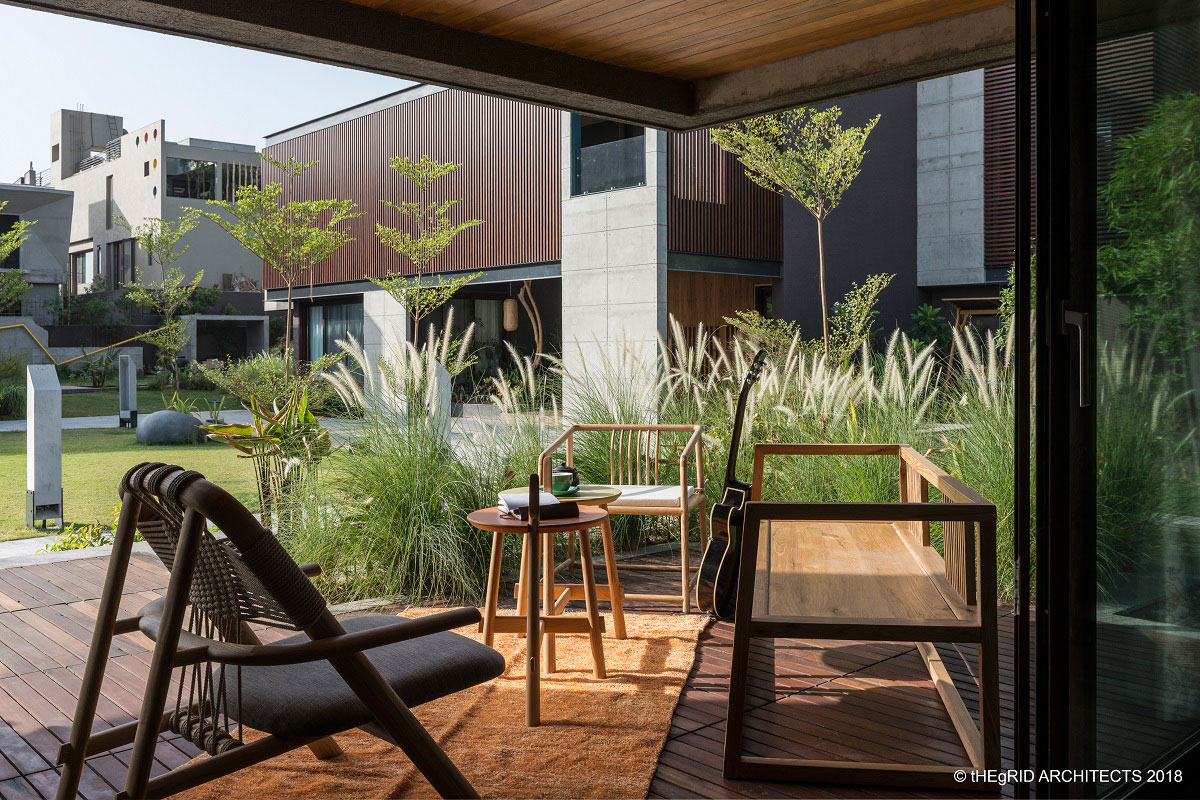
Local species encouraging biodiversity
- e) Basic material palette – wood, stone, concrete selected maintain the thermal mass.
- f) A veil of timber screens, horizontal and vertical, wraps around the houses, protecting the façade and the main living areas from the harsh sun and heat of the climate of Ahmedabad and form a transparent curtain to the garden maintaining a visual connectivity between exterior and interior. But at night, with the rooms illuminated within, the effect akin to a magical lantern.
- g) Each house has a water-body at the entrance porch and a personal sit out in continuum. The constant presence of water in every house infuses serenity. The water-bodies are infused with koi fish and lilies and surrounded by insect repellent plants to maintain the ecosystem.
- h) The oxygen generating plants in the landscaped prayer room gently lit from the skylight and the wall is cladded with bricks to reduce the heat quotient and sharp reflection.

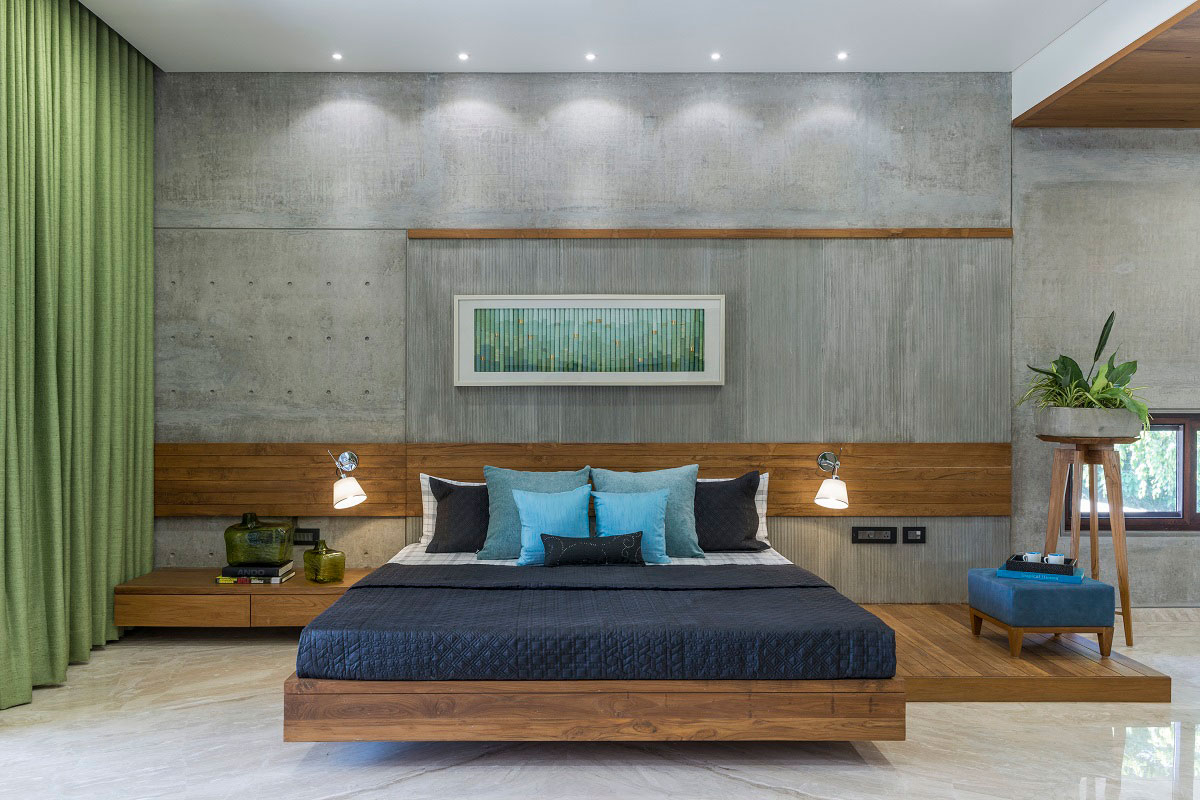

DETAILING / USE OF MATERIALS:
A basic, close-to-nature basic palette was selected stone, wood and concrete which helped create a stable thermal mass
A veil of timber screens, horizontal and vertical, wraps around the houses, protecting the façade and the main living areas from the harsh sun.
The screens protect and form a transparent curtain to the garden maintaining a visual connectivity between exterior and interior.
Main Door: The elegant entrance door design was inspired from the play of shadows created by the screens on facade which were enveloping the home to protect from the harsh sunlight and heat of the city. In response to this the shadows were extruded as a design in the solid teak wood to emulate the interplay of light creating a strong presence.
Landscape Lamp: The main source of light is at the lower part of the design, illuminating the granite flooring texture and creating subtle shadows. The indirect light helps to avoid insects. We reached this shape and design as we wanted to have indirect accent light.
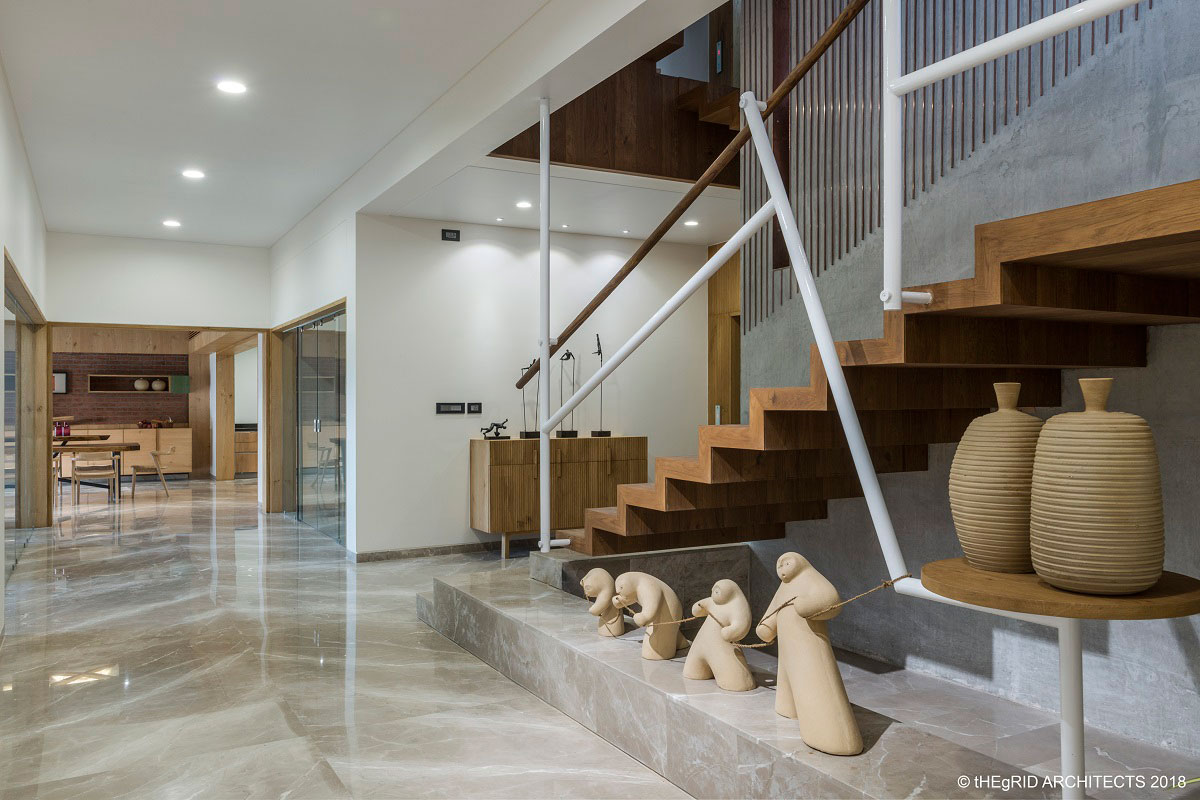


The natural grey concrete finish combined with metal has a unique result enhancing the earthy texture and geometric shape.
STAIRCASE: (VILLA 2) The staircase is defined as a sculptural element on its own. The staircase is a striking element by itself, thoughtfully designed to form an exquisite composition, with its landing adorned by artwork and interesting light fixtures
STAIRCASE: (VILLA 3) The copper plates were inserted during construction in the RCC and it was allowed to set. This became the focal feature as a handrail and an interior sculpture. A grand staircase designed in concrete, copper and wood, takes you to the first level. Its excellent craftsmanship, finishing and attention to detail make it a piece of art — much like the work wall-mounted at the landing.
Each house has a private patio a timber deck flanked by a water-body filled with lilies, and fishes.
